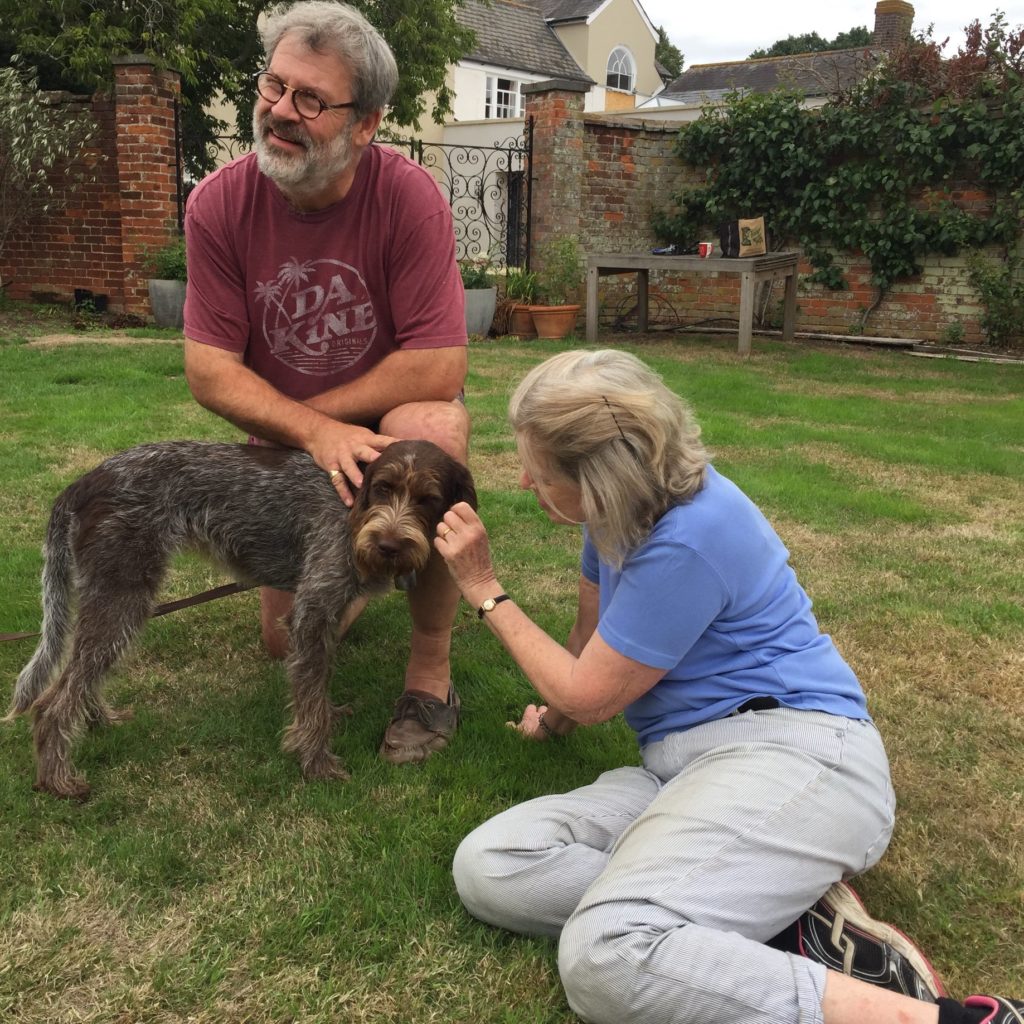Arrival day
“Hope for the best, but prepare for the worst”.
Having thoroughly prepared, arrival day is here! As per the preparation page, have all your plans in place and keep your phone to hand at all times as things can change and we sometimes need to contact you immediately.
It is a very exciting time, but it’s vital to stay calm and not expect too much of the the dog.
Your new family member has been moved multiple times in recent months. The dogs may also have been neutered in the last few weeks. At the very least, they have had a long journey in strange new surroundings with vet preparation first, so they have been prodded, poked and pulled about never knowing that what is happening is for their own good. Everything has changed for them. Many dogs adapt surprisingly quickly and are happy straight away, but others can react differently.

Settling
These first few minutes, hours and days are vital – it’s when habits are first formed, and it’s much easier to start with good habits than eradicate bad ones. Basic ground rules like toilet training, not chewing, being left for a little while…all these can begin to be established from the first moments. Plan to put the days after arrival aside to observe and learn about your new companion. We recommend they are not left unattended during these early days other than short periods, steadily increased, to accustom them to it.
Giving your new charge room in the house to explore properly and to find a place where they feel safe pays dividends in the coming weeks. Sitting with a nervous dog in this safe place and stroking them softly starts the bonding and enables you to check their coat, paws and their general condition. Every dog is different and by observing them, you will see where they are happy and relaxed. They then start to relax and breathe in their new life.
Standing in front of the dog, pulling on the collar, picking up and standing over the dog can make a dog feel even more uncomfortable and unsafe. Even too much touching and cuddling can be overwhelming for a dog that’s unused to it. Let the dog come to you, and allow it to set its own pace. Getting down to the dog’s level and being still, so that he or she can approach you, is a better idea.

You can help the dog by being relaxed and calm yourself. And by not letting your dog do too much too quickly. It is often tempting, when a dog has just arrived, to do long walks, visit family and friends, go to the beach in the car. It can be better to give them rest and peace. Not only the first day, but also the next weeks, months, maybe even sometimes years. Make sure that the stimuli that your dog receives are as small as possible. So, start with time just in the garden at first. Then walking short distances and then go back home. Little by little, baby steps, listen to what the dog is telling you.
Be vigilant:
Collection and the first weeks are a very high risk time for a dog to be lost. The journey will have been stressful for them and it is vital to be very alert at this time. Having been kept in kennels, the sound of normal everyday life can often upset these dogs, causing them to panic. They do not know their new environment or the voices or scent of their new owners.
Examples of how dogs have been lost:
– Visitor came by and did not shut door properly
– Became panicked when free in the garden and scaled six foot high gap in fence
– Dog was settled but then jumped a five bar gate in interest to see what was on the other side.
– Dragged retractable lead out of hand and ran into woods. Lead handle wedged in trees causing dog to be trapped for two days. Recovered by hearing her barking at night.
– Dog panicked and pulled short lead out of owner’s hand (Hand was not through leash loop)
– Dog was on double lead and harness but got tangled up, escaped whilst being untangled
Should your dog become lost, please contact us immediately. Please do not hesitate, we are not here to judge but to assist! Each case is different according to circumstances but we can help!
For potential AHPA inspection, the dog must remain on your premises for 48 hours after arrival – so garden walks only. The AHPA inspect around 50% of new arrivals, and they will call first if they intend to do this. It is just to check paperwork.
